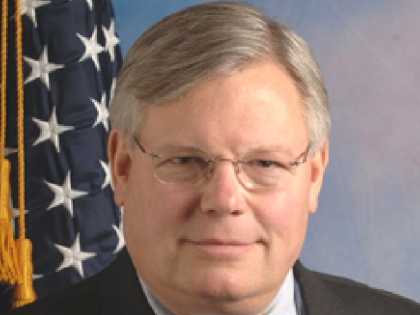
The Villager: Politicians, enviro groups call for a drilling ban in watershed
By Albert Amateau
October 7, 2009
The state Department of Environmental Conservation last week issued an 809-page draft generic environmental impact statement, or G.E.I.S., proposing rules for extracting natural gas by hydraulic fracturing drilling in New York City’s Upstate watershed.
The Sept. 30 release of the draft G.E.I.S., which proposed rules for natural-gas production, prompted Manhattan Borough President Scott Stringer and a coalition of elected officials and environmental advocates to demand an outright ban on drilling in the Catskill/Delaware watershed, which supplies 90 percent of New York City’s water supply.
Stringer called for a “Kill the Drill” campaign on Thurs. Oct. 1.
“Today we start a campaign with one clear goal — to make certain that before this plan becomes law, it includes a ban on drilling for natural gas in the city’s Upstate watershed,” he said.
Earlier this year, Stringer issued a report citing 14 examples of freshwater contamination attributed to hydraulic fracturing natural-gas drilling (known as hydrofracking) in nine states, with at least 24 incidents of total environmental harm.
The state D.E.C. on Sept. 30 announced a 60-day public comment period on the plan.
However, in November and December of last year, D.E.C. held hearings on the scoping session for the G.E.I.S. in six Upstate counties of the watershed but none in New York City, prompting protests from local elected officials.
But Stringer said last week that he received a commitment from Governor Paterson that a public hearing would be held in New York City sometime during the 60-day comment period.
Gas companies have applied for permits for hydrofracking wells in the Marcellus shale deposits thousands of feet under 27 Upstate counties in the state’s southern tier — including six in the city’s watershed. Hydrofracking involves drilling vertically, then horizontally, into the shale formation, and inserting under high pressure huge volumes of water, laced with a combination of more than 200 chemicals, most of them toxic in undiluted form. The solution fractures the formation and releases the natural gas trapped in the shale. Each well could be hydrofracted three times.
The draft G.E.I.S. follows state legislation passed last year that allows wells to be drilled closer together. The draft G.E.I.S. says that of the 1,549 square miles making up the Catskill/Delaware watershed, “1,077 square miles of the watershed are potentially available for the placement of well pads for the development of shale gas reservoirs.”
The document sets new standards about well spacing, the size of well pads, the transportation of water to well sites, recovery of used water and other technical measures.
But Stringer noted that Pennsylvania regulators closed down a hydrofracking operation near Dimock in Susquehanna County, Pa., at the end of last month after three chemical spills in a single week.
“The state’s safeguards are half-measures,” Stringer said of New York State. “No special permit or buffer zone can prevent the human error that has resulted in the pollution of freshwater from Pennsylvania to Colorado.”
State Assemblymembers Deborah Glick and Richard Gottfried, state Senators Tom Duane and Daniel Squadron, City Council Environmental Committee Chairperson James Gennaro and Councilmembers Daniel Garodnick and Jessica Lappin also issued statements calling for banning drilling in the city watershed.
Last February, Community Board 2 passed a resolution, supported by Councilmembers Rosie Mendez and Alan Gerson, also demanding a ban on hydrofracking in the watershed. While Council Speaker Christine Quinn’s staff has been active in research and organizing on the issue, the speaker has not taken a position on a proposed Council resolution to ban drilling in the city watershed.
“New York City’s drinking water supply is its single most valuable capital asset,” said Eric Goldstein of the Natural Resources Defense Council. “This is not a situation for half-measures or after-the-fact cleanups.”